150 Years of a family of German Shipowners
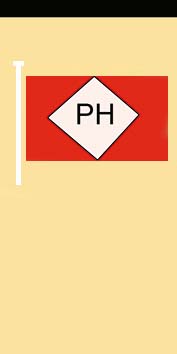
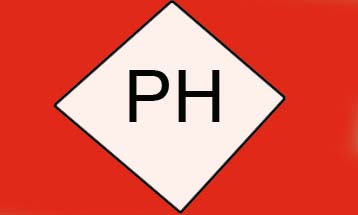 Schiffahrtskontor Altes Land Gmbh (S.A.L.) is a worldwide operator in the heavy lift, project cargo and offshore fields using vessels with a high lifting capacity of two thousand tonnes. The company has forty years experience in project cargo and heavy lifts, and the Heinrich family that began the company in 1980 can trace their family shipowning experience back to 1865 and five generations. The company engines aft vessels with twin cranes and clear decks for storing and transporting unwieldy project cargo have been coming to the Tyne for thirty years to load heavy flexible pipeline and umbilical reels for the offshore oil and gas industry. I have always found them to be extremely well maintained with hull paintwork in rust free and spotless condition.
Schiffahrtskontor Altes Land Gmbh (S.A.L.) is a worldwide operator in the heavy lift, project cargo and offshore fields using vessels with a high lifting capacity of two thousand tonnes. The company has forty years experience in project cargo and heavy lifts, and the Heinrich family that began the company in 1980 can trace their family shipowning experience back to 1865 and five generations. The company engines aft vessels with twin cranes and clear decks for storing and transporting unwieldy project cargo have been coming to the Tyne for thirty years to load heavy flexible pipeline and umbilical reels for the offshore oil and gas industry. I have always found them to be extremely well maintained with hull paintwork in rust free and spotless condition.
HEINRICH FAMILY SHIPOWNING HISTORY
Altes Land (Old Lands) is a traditional area of Germany that stretches for thirty kilometres along the left bank of the Elbe opposite Hamburg to Stade, and includes the villages of Buxtehude, Harsefeld, Hollern-Tweilenfleth, Horneburg, Jork and Steinkirchen. It has the highest concentration of fruit bearing and blossom trees in Germany as the land is very fertile and on a flood plain. The majority of the housing stock are large red brick houses with white timber half panelling and thatched roofs. Indeed, the head office of the company in the village of Steinkirchen (population 1,588) was one such large red brick house with a high gable end and the local butcher’s shop at one end. Altes Land became part of Stade Region in 1823 when the Duchy of Bremen was abolished. In summer, Hadag municipal tourist boats operate from the Landungsbrucken (Landing bridges) in Hamburg to the charming villages of Altes Land. The green hulled three masted barque Rickmer Rickmers of 1896 is permanently moored at the Landungsbrucken as a museum ship.
Johann Heinrich ordered the wooden two masted sailing ship Amoenitas from the local Sietas shipyard in Hamburg for delivery in 1865 with a cargo capacity of 140 tonnes. She ended her days when she stranded off Brazil during a gale, fortunately the Master and crew were saved. Wilhelm Heinrich, son of Johann, commissioned the Sietas yard to build the small sailing ship Capella of 150 grt for delivery in 1911 at a cost of 3,000 Deutsche Marks, and in 1923 she was fitted with a diesel engine. This ship was sold in 1927, and Wilhelm purchased a new Capella powered by a 100 hp ‘glowhead’ diesel, and in 1935 fitted her with a twin cylinder two stroke single acting diesel by the Hanseat Motoren Gmbh of Bergedorf. After the death of Wilhelm Heinrich, Capella was taken over by his eldest son Henry, his other sons were Paul Heinrich, Hans Heinrich, Claus Heinrich and his daughter was Wilma Heinrich.
Hamburg suffered 79,600 people killed or injured in Operation Gomorrah during the month of July 1943 alone in the bombings by the R.A.F. and U.S.A.A.F., destroying the Hammerbrook and Rothenburgsort areas of the city. By the end of the war, the Blohm & Voss, Deutsche Werft, Howaldtswerke and J. J. Sietas shipyards as well as the port and the city lay in ruins. As little as one fifth of the port remained in a useable condition, it took ten years to rebuild the remainder. Fortunately, the Altes Land was spared the destruction, and the Heinrich family resumed shipowning when Paul Heinrich, who had served during World War II in the German armed forces, purchased in 1947 a former small Navy vessel M.F.P. 120, built at Mannheim in 1944, and had her converted at the Sietas yard into a coaster and renamed her Pirat of 271 grt. She was twin screw and propelled by an eight cylinder M.A.N. diesel engine, and traded in the Baltic and North Sea transporting timber from Scandinavia to Germany, general cargo to England, and wheat to Denmark until sold in 1956. Paul Heinrich spent forty years at sea as a Mate and Master of family owned coasters, and the extended Heinrich family was able to commission a fleet of new and second-hand coasters in Capella 497/53 and purchased in 1958, Helga 298/54, Karin 425/58, Frauke 499/56 renamed Svenja in 1971, Regine 499/66, Helga-Gunda 499/56 and purchased in 1963, and Petra-Gunda 499/66 and purchased in 1971.
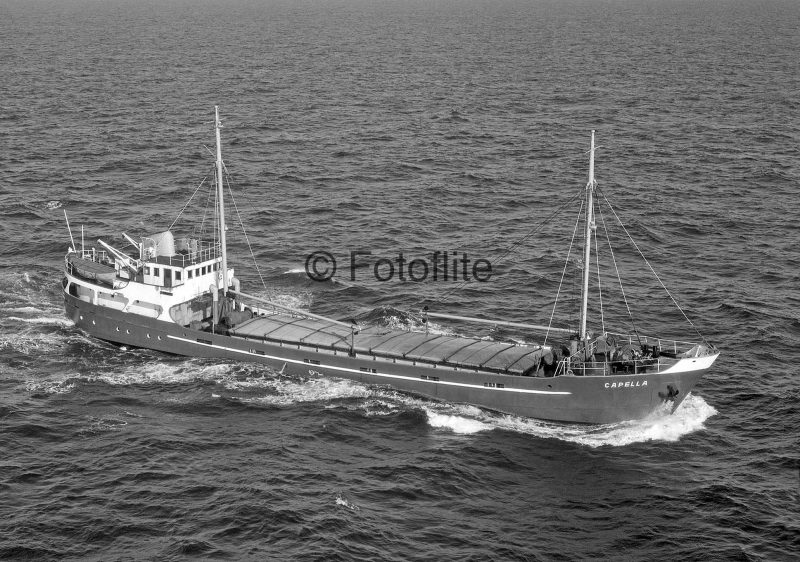
Paul Heinrich named his ships after his wife Regine and daughter Frauke, as he and his wife had three children in Hans, Claus and Frauke. The tradition of naming vessels after female members of the family has continued ever since. These coasters traded in the Peter Dohle agency fleet of Hamburg, known as Vertrauensmakler in Germany by shipowners, as an onshore agent to charter, operate and cost account the coasters for shipowners serving at sea. Larger new coasters were then commissioned as Frauke in 1971, Comar II in 1971, and Regine and Mosta of 1,500 dwt in 1976, all with very useful container carrying capacity.
In 1978, a new type of coaster was ordered as a low air draft vessel named Pirat of 999 grt and 2,650 dwt known in Germany as Seeachlange (Sea Snake) with the navigating bridge able to be lowered to the deck and hinged masts to clear low bridges on the Rhine. The sisters Svenja of 1982 and Frauke of 1983 followed, captained by Claus Heinrich. His brother Hans was more interested in the commercial side of shipping and became a shipbroker, and their sister Frauke married the owning captain of a coaster and accompanied him on many voyages. The Heinrich fleet traded in the North Sea and Baltic, and also on the Rhine, Rhone and Danube rivers, and even ventured as far as New Orleans and the Mississippi for cargo. Project cargo such as large cylinders was carried on the hatches and lifted onboard by shore cranes.
FORMATION OF S. A. L.

After working for Peter Dohle Schiffahrts K.G. for ten years, Hans Heinrich decided to take on a new challenge in 1980 and created Schiffahrtskontor Altes Land (S.A.L.). He and his brother Claus took over the management of three vessels from their father Paul and started a chartering business. The logo of S.A.L. was inspired by the local twin lifting Hogendiek Bridge, and the funnel colours were yellow with ‘PH’ in black on a white diamond on a red background. S.A.L. began operations with a shore staff of three in Hans Heinrich, Annegret Heinrich and Ulf Kother, with the trio soon joined by Lars Rolner from Denmark and several other staff members from Denmark.
A heavy lift expertise team and an engineering department was set up in 1985 as Luhe Engineering with Claus Heinrich as Managing Director. Roland Schulz looked after the technical aspects of heavy lifting and engineering, and also managed the maintenance of the fleet until 2002, when Uwe Brummer, an experienced Master and cousin of Hans and Claus Heinrich took over the position and supervised the newbuilding of several heavy lift vessels. The first newbuilding heavy lift ship was Calypso of 4,145 dwt in 1984 from the J.J. Sietas yard and equipped with twin cranes of thirty tonnes capacity, sixty tonnes when used in tandem, as a joint venture between S.A.L. and Kestrel Shipping Ltd. of London. Two sisters of Calypso from the Sietas yard in 1987 later served as Svenja between 1992 and 1996 and was then renamed Steinkirchen, and Frauke later renamed Amoenitas. A non Sietas built heavy lift ship was Tina of 2,775 dwt and equipped with a crane of 100 tonnes capacity and a derrick of 150 tonnes capacity.
Two heavy lift vessels with much increased lift capacity of 150 tonne derricks on bipod masts were completed in 1985 by the Sietas yard as Annegret and Antje, and traded with project cargo mostly between Europe, the Persian Gulf and India transporting equipment for the oil, electricity and construction industries. In 1987, a new type of heavy lift vessel known as the Sietas Type 132 was designed and of which twelve vessels were completed for the S.A.L. fleet. Regine of 1987, Antje of 1989, Lena of 1990, Grietje of 1991, Annegret of 1992, Paula of 1992, Margaretha of 1992, Wiebke of 1993, Frauke of 1994, Trina of 1995, Regine of 1996 and Svenja of 1996 had their lifting capacities increased from twin cranes of 100 tonnes capacity to twin cranes of 250 tonnes capacity in the last quartet completed.
Fairmount Agencies fixed Wiebke in October 1993 to carry a large passenger catamaran on its maiden voyage. This quartet was also equipped with a stability pontoon, which is lowered into the water on the opposite side of the hull from where lifting operations are in progress. A service speed of sixteen knots ensured that the client received the project cargo on time and faster than a traditional barge and tug method. The stability pontoons are particularly useful when two S.A.L. vessels are lying alongside each other and transferring cable reels. Paula and Annette used the pontoons on the outboard sides of their hulls on one occasion to give increased stability.

ARIANE IV ROCKET LAUNCH SYSTEMS EQUIPMENT
A joint venture by S.A.L. and U.I.M. of France built a special twin screw vessel named Ariana of 7,876 grt in 1988 at the J.J. Sietas yard in Hamburg to carry equipment from Le Havre and Bremen to Kourou in French Guyana. The Ariane IV rockets made a total of 113 successful launches of Intelsat communications and Earth observation satellites between the first launch on 15th June 1988 and the last on 15th February 2003. There were only three failures during fifteen years of continuous success, capturing around 60% of the world market for launching commercial satellites.
The Ariane IV rocket was designed by the French National Centre for Space Research, and was a two stage space vehicle with a height of 192.7 feet and a diameter of 12.5 feet and could carry a payload of 4,760 kilogrammes.
It was fitted with four solid or liquid boosters with a burn time of 142 seconds, a first stage with a burn time of 278 seconds and a second stage with a burn time of 132 seconds. If a further third stage was fitted this increased the burn time by another 446 seconds to give a total launch time of almost seventeen minutes, enough to put any satellite into the required orbit.

The managed S.A.L. vessel Ariana had a hold height of 13.8 metres and the larger rocket units were rolled into the vessel on a back ramp with twin cranes of 100 tonnes capacity (200 tonnes if used in tandem) assisting in the lifting of smaller launch equipment. Ariana was chartered for ten years to Arianespace S.A. by the joint venture of S.A.L. and U.I.M., and was a key component in the delicate transportation of this very successful launch system to its launch site in South America.
Ariana was sold in July 2005 to Beluga Heavy Lift and renamed Beluga Spirit, becoming BBC Egypt for BBC Heavy Lift in 2007, and Thor Spirit in 2008. Since 2011 she has sailed as Agata M and she still operates as such for Marsig MBH of Rostock.
SIETAS TYPE 161 S.A.L. HEAVY LIFT VESSELS
Ten Sietas Type 161 heavy lift vessels of 9,530 dwt were constructed for S.A.L. between 1997 and 2004, with the first quartet equipped with twin cranes of 275 tonnes capacity (550 tonnes if used in tandem), the next four vessels of Type 161A had twin cranes of 320 tonnes capacity (640 tonnes if used in tandem on the port side) with another crane of 200 tonnes capacity on the starboard side. The final pair of Type 161B vessels had twin cranes of 350 tonnes capacity (700 tonnes if used in tandem on the port side) and another crane of 250 tonnes capacity on the starboard side. These versatile heavy lift ships were named in order of completion as Gloria (1997), Wilma (1997), Annemieke (1998), Lena (1998), Grietje (2000), Annegret (2000), Paula (2000), Wiebke (2000), Annette (2003) and Maria in 2004. S.A.L. now had eighteen heavy lift vessels under its control, making it the most modern in the world, with some of the older vessels sold off.

The Sietas Type 161 vessels were used primarily to carry heavy equipment from or to European, Mediterranean and Black Sea ports and the Persian Gulf, India, South East Asia and China, Japan and Korea in the Far East. Further destinations on inducement were from South East Asia to Fremantle in Australia, a Transpacific service from the Far East via west coast ports in the U.S.A. and the Panama Canal to Europe, and from Europe to West and South Africa and Brazil linking up with South East Asian ports. This led to the introduction of a regular S.A.L. Semi-Liner Project Service for the transportation of heavy lift, breakbulk, container and project cargoes between Europe and the Far East. A number of S.A.L. vessels make three or four voyages to the Far East each month. Some 270,000 tonnes of freight was carried on the S.A.L. Semi-Liner and Project Service in 23 consecutive voyages during 2014 for a refinery and petrochemical plant in Vietnam, with some unit lifts weighing up to 1,100 tonnes each. Several Sietas Type 161, 176 and 183 vessels owned by S.A.L. were involved in transporting refinery risers, strippers, debutanisers and demethanisers, with the longest item having a length of 95 metres.
Ports that have since been called at with inducement include Savannah and Houston in the U.S.A., Yanbu in the Red Sea of western Saudi Arabia, Nuuk in Greenland, Sattahip in Thailand, Mahe in the Seychelles, Jakarta and Surabaya in Indonesia, Acajutla in El Salvador, Porto Alegre and Rio Grande in southern Brazil, and many other remote destinations. Often, no infrastructure is available and the project cargo is unloaded to a concrete quay by the vessel’s own cranes.
S.A.L. had a fleet of thirteen heavy lift vessels in service in November 2000 and engaged on the following voyages:-
| Annegret | Gefle (Sweden) to Mantyluoto (Finland) |
| Annemieke | Singapore to Jakarta and Surabaya |
| Frauke | Masan (South Korea) to Osaka |
| Gloria | Savannah to Genoa |
| Grietje | Kobe to Aviles (Spain) via the Suez Canal |
| Lena | Ulsan and Singapore to Sharjah (United Emirates) |
| Margaretha Paula | Ravenna to Civitavecchia |
| Singapore to Ho Chi Minh City | |
| Regine | Antwerp to Arzew (Algeria) |
| Svenja to Trina | Kaohsiung and Singapore to Venice |
| Hong Kong to Masan and Ulsan | |
| Wiebke | Singapore to Tyne to load reels |
| Wilma | Karachi to Singapore and Laem Chabang |
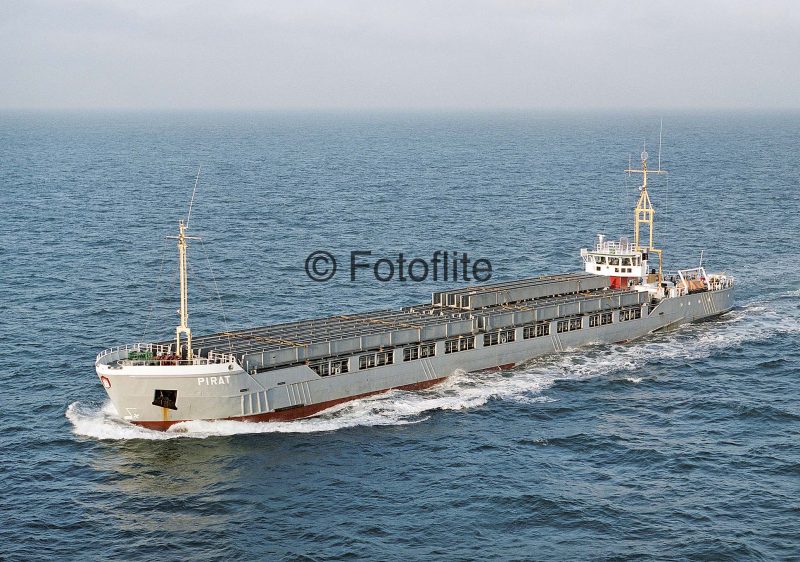
Further shipments of heavy flexible pipeline and umbilical reels from the Tyne and Aberdeen continued between 2001 and 2006, in the heavy lift vessel Lena and her S.A.L. sisters for oil and gas installations around the world. In July 2006, Annegret transferred a steel jacket weighing 420 tonnes and a wellhead platform weighing 330 tonnes from Perth in Western Australia for use in the Pohokura project off the western coast of North Island of New Zealand. The lift was complex and involved rotating and raising the tall jacket from the horizontal to the vertical position on the deck of Annegret, and it was then transported in the open hold. This was the first time that S.A.L. had completed this oil rig jacket righting movement, normally done by the barge and tug method.
‘K’ LINE BECOMES A MAJOR PARTNER
The S.A.L. staff had increased from 2001 to 2007 to almost one hundred staff onshore and 550 seafarers working worldwide. Kawasaki Kisen Kaisha of Tokyo (‘K’ Line) took a 50% interest in S.A.L. in March 2007 and four years later became the sole shareholder, acquiring the remaining shares from the Heinrich family. This provided fresh capital for six new world heaviest heavy lifters in four Sietas Type 176 vessels delivered during 2008/09 and two Sietas Type 183 vessels delivered during 2010/11 to S.A.L. The Type 176 vessels were named Frauke (2008), Anne-Sofie (2008), Trina (2008) and Regine (2009), and are equipped with twin cranes of 700 tonnes capacity (1,400 tonnes when used in tandem) on the port side and one crane of 350 tonnes capacity on the starboard side.
The Sietas Type 183 sisters Svenja and Lone were delivered in December 2010 and March 2011 by the J.J. Sietas yard in Hamburg for heavy lifts in the petrochemical markets. They are equipped with twin cranes of 1,000 tonnes capacity (2,000 tonnes when used in tandem) on the port side. They have a hull length of 160.5 metres and moulded beam of 27.5 metres and a draft of 9.0 metres, with the hold being 107.1 metres in length and 17.0 metres wide and 13.7 metres deep. Svenja and Lone are measured at 15,026 grt with a deadweight of 12,975 tonnes, and are both equipped with Kongsberg Dynamic Positioning Systems for accurate positioning of the vessels when working in offshore oil fields. Lone was later fitted with a second bow thruster for better manoeuvrability to install subsea tidal turbines. Svenja and Lone have a high service speed of twenty knots from a nine cylinder four stroke M.A.N. – B & W diesel of 17,136 bhp. Lone is registered at Hamburg and Svenja in St. John’s on Antigua, and with their very wide beam and unobstructed holds they can transport large and unwieldy cargo, or 971 TEU of containers, safely worldwide. Thus, the lifting capacity of S.A.L. vessels had increased one hundred fold in thirty years from twenty tonnes in 1980 to two thousand tonnes in 2010.
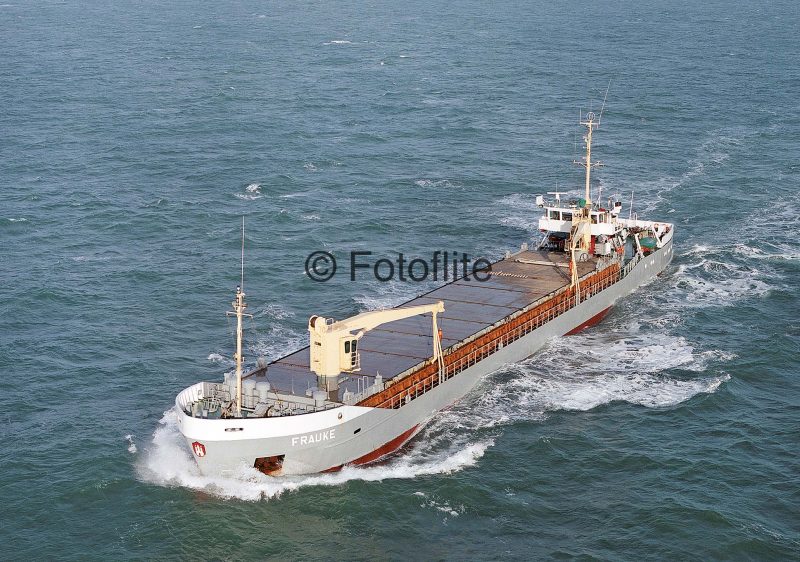
S.A.L. WORLDWIDE HEAVY LIFTS and OFFSHORE WORK
During the last few years, some very heavy items in an amazing variety of shapes and sizes have been transported worldwide, including large living quarters blocks with heliports attached, and huge spherical tanks. Svenja was used during the wreck removal of the Costa Line cruise ship Costa Concordia at Giglio Island in the Tyrrhenian Sea off the western coast of Italy. Four subsea platforms, each weighing one thousand tonnes, eleven flotation sponsons, each weighing 550 tonnes, and one blister tank weighing 1,500 tonnes were either collected from port or received on barges at the wreck site for installation on the port side of the wreck or at a depth of 45 metres in the pre-piled seabed to facilitate the righting of the wreck to a vertical position and her refloating.

Svenja was chartered by Deutsche Oel and Gas A.G. between April and September 2015 to serve as a project vessel for an oil platform installation off Alaska. She successfully installed this offshore development platform within a petroleum and gas exploitation area in the Cook Inlet, in a challenging environment to produce natural gas from the end of 2015. She also transported some remarkably wide platform modules for an extension to the Burj Al Arab Hotel, the tallest hotel in the world at Dubai, from Rauma in Finland in January 2016. This necessitated the modules overhanging both sides of her hull to a considerable extent, as well as high stacking of the cargo. Six platforms ranging from 79 metres by 36 metres and from 52 metres by 42 metres were loaded in the harsh winter conditions at Rauma over Christmas and New Year in temperatures down to minus 28 degrees Celsius. The total of 3,500 tonnes of heavy cargo arrived in Dubai on 30th January 2016 in the contrasting sweltering temperatures of the United Arab Emirates. This was one of the heaviest and most difficult projects undertaken by S.A.L. in order to provide a large extension over the beach at the hotel.
Svenja also transported five wharf modules weighing up to 700 tonnes from Sattahip in Thailand to Geraldton in Western Australia for the Karara iron ore project. The modules measured up to 54.3 metres by 19.1 metres with a height of 4.6 metres, and were discharged directly from Svenja onto the stabbing piles of the new wharf in challenging swell conditions and precision working. Svenja also transported an LPG platform weighing 1,320 tonnes and an LNG platform weighing 1,080 tonnes from Batam in Indonesia to Darwin harbour in Australia, with dimensions of 45.0 metres by 40.0 metres with a height of 8.0 metres and an overhang on Svenja of 8.75 metres. The platforms for the Ichthys Project were discharged directly to nine piled foundations with exacting tolerances of less than three centimetres and a tidal range of seven metres. Svenja transported eight tugs from Haiphong and Da Nang in Vietnam to Lagos in Nigeria and Rotterdam for major client Damen Shipbuilders in September 2016. The tugs weighed up to 500 tonnes with two lifted and secured in the hold and six tugs secured on deck. The cargo also included eight pontoons built at the Damen Yichang yard in China. The tugs were constructed by the Damen Song Cam yard in Vietnam and the cargo was delivered on time in Nigeria and at Rotterdam.
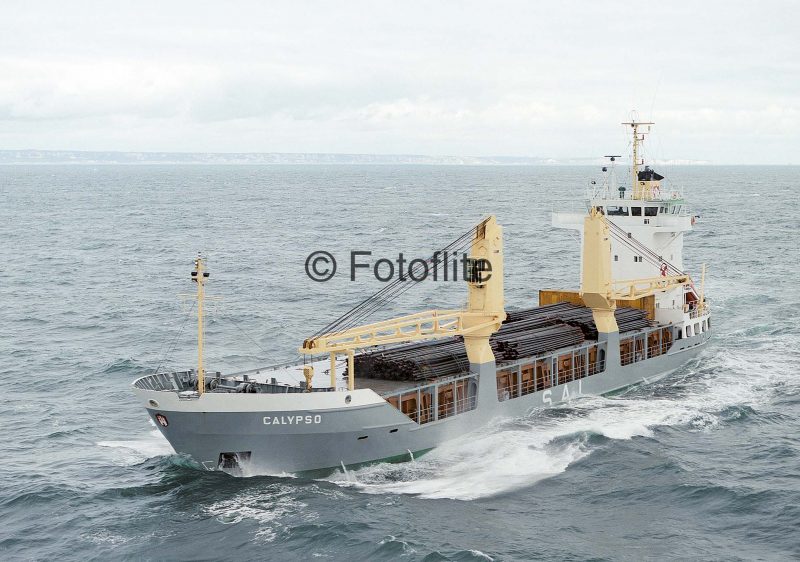
Svenja lifted four reactors of 1,400 tonnes and one of 150 tonnes from the quayside at Wilhelmshaven and relocated some of them to Kristiansand and some to Chalmette (U.S.A.). The hold and the deck was utilised to their full extent to re-use the reactors at new sites. She also transported six coke drums from Kobe to Yanbu in the Red Sea, the largest of which weighed in at 600 tonnes. She has also worked a lot in the offshore oil industry, including for the Goliat FPSO Project off Norway, when she loaded and discharged to shore four large heavy drilling templates, each with four legs.
Svenja was contracted from the start of January 2017 to Dutch offshore construction company Van Oord to make thirty voyages from Teesside and Aalborg with 47 transition pieces, and 87 monopiles from Rostock to Belfast for onward movement to the Walney Offshore Windfarm 9.3 miles off Barrow. She loaded a dozen yellow transition pieces of height 30 metres and seven feet in diameter on each voyage from the Redcar Ore Terminal on the Tees. These tall items weighed up to 579 tonnes each and were lifted by the twin heavy lift cranes of Svenja from the quay, and had been manufactured at the former Haverton Hill shipyard upstream on the Tees and transported down the river on a barge owned by Osprey Shipping of Wallsend. The monopiles form the foundation of each offshore wind turbine and weigh up to 970 tonnes each and are 27.5 feet in diameter, and the transition pieces are installed on top of the monopiles. The Walney Offshore Windfarm will have a total of 102 Siemens built turbines generating 367 megawatts of electricity.
Lone, sister of Svenja, transported a very heavy shiploader from Bremen to Cartier in Canada weighing 775 tonnes with dimensions of 57.9 metres by 23.2 metres with a height of 34.8 metres. The shiploader had to be secured at an angle across the deck and overhung the sides of the hull, with special water pockets fixed on the cargo to generate counterweight and provide stability. This was the heaviest ever cargo loaded in the Neustadter harbour in Bremen. Lone made an exacting lift of two cranes weighing 360 tonnes each on the quayside at Bremen for transport to Corpus Christi (Texas). The crane dimensions were 23.2 metres by 22.8 metres with a height of 21.1 metres, and the lifts demanded balanced lifting arrangements due to the unusually located centre of gravity of the cranes with clearances of only twenty centimetres during loading and discharging. Lone also transported six light trains, each weighing seventy tonnes from Bremen to Montreal. The rail vehicles had a length of over 41 metres, and due to their length special lifting spreader bars and fasteners had to be designed, manufactured and certified at short notice.
Lone participated with other S.A.L. heavy lifters in transporting some 60,947 tonnes of freight for a plastics plant expansion at Point Comfort (Texas). The cargoes were loaded at Mai Lao in China, with Lone making three consecutive voyages via the Panama Canal from late 2015 to early 2016. She also transported a STP buoy in May 2016 from Batam in Singapore to the Firth of Forth in Scotland at an average speed of 19.3 knots. The turret oil production buoy weighed in at one thousand tonnes and was safely transported to Scotland on her eight thousand mile voyage.
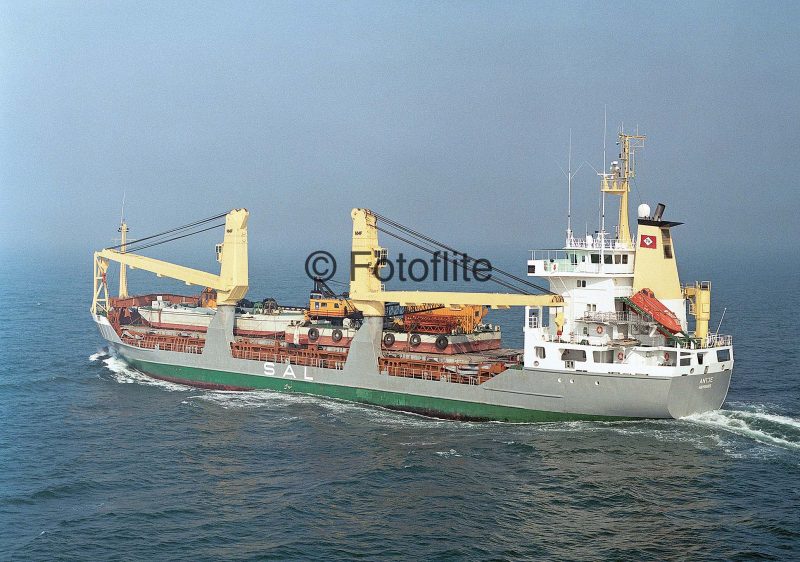
The first offshore contract won by S.A.L. used Lone to successfully carry out pre-piling operations on the Wikinger Test Pile Project in the Baltic Sea for two months from November 2014. She used pile testing equipment for three sets of three piles in the first phase of the contract, and two more sets of piles in two further locations. Inclement weather and short weather windows made pre-project pile tests very difficult until they were eventually completed in January 2015. Lone also transported two large reels complete with flexible pipeline weighing 800 tonnes each from Pori in Finland to Floro in Norway. The pipeline was discharged to the hold of a pipelayer in a successful ship to ship transfer with extremely accurate positioning required to a tolerance of less than two cms.
In January 2013, Lone loaded a 1,250 tonne shiploader crane at Abbot Point in Queensland for delivery to a Mokpo shipyard in South Korea for refurbishment. Her sister Svenja returned the shiploader to the Adani mining plant in Queensland a year later. The lifts and discharges were complex due to the big difference in the height of the jetty above the water line and the height of the S.A.L. heavy lifters. This meant lifting the shiploader very high to achieve sufficient clearance, with very strong tidal and stability issues also to be taken into account. She also lifted reactors, risers, strippers, debutanisers, demethanisers and other refinery equipment in Japan of total weight of 2,219 tonnes for Vietnam, the largest piece measuring 26.6 metres by 6.0 metres by 9.0 metres. The twin cranes of Lone were also used in tandem to lift fully erected harbour cranes at Wilhelmshaven for delivery to Sfax and Gabes in Tunisia.
The heaviest ever lift for Lone comprised four reactors, each of 1,719 tonnes, transported from Japan to Trinidad for the RPLC Deep Conversion Project. Lone also installed a tidal turbine off one of the Orkney Islands after transporting this Voith Nacelle unit from Stavanger to Kirkwall. The lowering of the turbine in the sea and on to the seabed was monitored by an ROV, also carried from Stavanger by Lone. She also installed a subsea manifold weighing 300 tonnes on the seabed to link up with the end of a pipeline from the DP2 Project in the Mediterranean.
Type 161 and 176 S.A.L. heavy lifters have also been involved in complex lifting of heavy cargo in recent years. Anne-Sofie transported eleven diesel engines, each weighing 290 tonnes with dimensions of 14.35 metres by 4.1 metres with a height of 6.1 metres from Trieste to Mongla in Bangladesh. with a special loading program having to be designed by the S.A.L. engineering department. Trina transported two container crane bridges from Rostock to Ulsan, each weighing 340 tonnes with dimensions of 30.45 metres by 20.2 metres with a height of 20.6 metres, with the yellow painted cargo occupying the full width of the deck of Trina. Trina also mastered height restrictions of the Asparuhov Bridge at the entrance to Lake Varna with a clearance of only 46 metres when transporting two fully erected Liebherr cranes from Bourgas and Varna to Ravenna in Italy. The cranes of weight 697 and 455 tonnes had to be loaded into the hold of Trina to give the necessary height clearance, and completed the voyage with open hatch covers. Trina was contracted from September 2016 to January 2017 to transport 67 transition pieces each weighing 365 tonnes and measuring 22.0 metres by six metres from Denmark to the Veja Mate Offshore Windfarm off the North Sea coast of Germany. Trina made twelve consecutive voyages, which included the associated components of airtight platforms and anode cages.

Maria installed caissons on to new harbour dredging at Cape Preston in the Pilbara area of Western Australia to form quays of this new port. Cape Preston lies sixty kilometres south west of Dampier, with exports of 175 million tonnes of iron ore per annum, and the new Cape Preston harbour project began in 2013 adjacent to the new Sino Iron Ore Project, which will eventually work up to the scale of iron ore exports at Dampier. Anne-Sofie loaded a very tall pipelay tower of 940 tonnes weight at La Rochelle for Brazil, with extra metal stabilising sheaths constructed on the deck of Anne-Sofie before the lift from the quay, and placed around the pipelay tower to prevent catastrophic collapse of this very expensive piece of cargo.
Frauke transported six fully erected rubber tyred gantry cranes from Changxingdao in China to Vancouver in June 2016. A mastery of stowage on deck was shown by the S.A.L. experts on shore and on the vessel. S.A.L. vessels have also transported LNG tanks from Zhangjiang in China to Gydnia for the newbuilding gas carrier Coralius in August 2016. The gas carrier needed her gas tanks at an early stage in the construction of her hull, and S.A.L. completed the contract on time. A challenge of a very different sort was provided by a very old Gottwald crane being transported from Holland to Greece in May 2016. The crane documentation had been lost over the thirty years since it was built, and the weight and dimensions of the crane had to be re-measured before lifting could take place. Frauke also transported two carousels from Rotterdam to the U.S.A. to be wound with flexible umbilicals, and then taken to an offshore platform off West Africa in 2014. The carousels weighed 1,475 tonnes when empty and 1,875 tonnes when fully spooled, and were 26 metres in diameter and twelve metres high. Support for the project installation vessel had to be given by Frauke for over two months while the pipeline was transferred, stored and laid, with Frauke transporting the empty carousels back to Rotterdam, the project took six months.
Anne-Sofie transported nine modules for an oil refinery upgrade in Antwerp from Tarragona in Spain. The total volume of the cargo was 19,502 cubic metres and was stowed both in the hold and on deck. Trina and Gloria transported gas plant modules weighing up to 388 tonnes each from Kuwait and the United Arab Emirates to the U.K., with the total volume of the cargo being 55,000 cubic metres. Maria transported thirty wind turbines including towers, nacelles, hubs and blades from Northern Germany to Belfast for the Ormonde Windfarm Project. She made a dozen consecutive voyages, lifting up to 2,738 tonnes and 22,230 cubic metres of cargo per voyage. Annette made eleven consecutive voyages from Rostock to Barrow with monopiles for the Walney Offshore Project, the cargo weighed between 480 and 550 tonnes each with dimensions of 55.0 metres by 6.0 metres. Annegret loaded a very tall cryogenic heat exchanger weighing 257 tonnes with dimensions of 50.7 metres by 5.7 metres by 6.1 metres in May 2014 for use in the Bintulu LNG Train 9 project from Fairless Hills in the U.S.A. for delivery in Sarawak in Borneo.
Annette loaded and discharged manifolds and suction piles manufactured by Aker Kvaerner from Penglai in China and Port Klang in Malaysia, weighing 330 tonnes each, and transported them to the Krishna Godavari Basin oilfield. The latter is off Kakinada in the Gulf of Bengal and was part of the Indian MA-DG Oil Project. Anne-Sofie discharged a 900 tonne very tall spider buoy at Dampier after transporting it in her open hold from Shanghai for the Pyrenees Offshore Oil Project in Western Australia. These cargoes are just some of the many heavy lifts and offshore work completed by S.A.L.
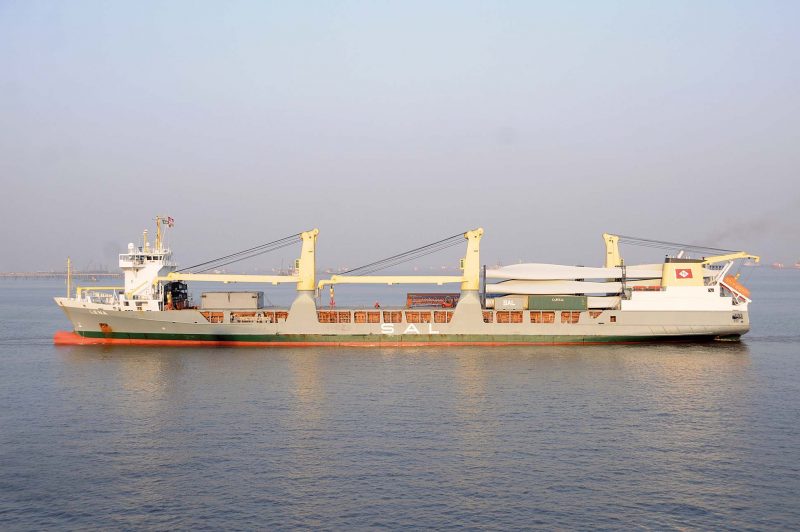
SUPER YACHT TRANSPORT
Very wealthy super yacht owners often transfer their craft from the Mediterranean to the Caribbean on large heavy lift ships in order to gain the maximum length of yachting season in each region. This is a very expensive process, as was illustrated when Regine loaded nine yachts with dimensions of 56.0 metres by 10.6 metres from several ports in the Mediterranean to South East Asia. The biggest super yacht was loaded first at Genoa with a weight of 775 tonnes, followed by the remaining eight yachts at other Mediterranean ports, all carefully loaded and heavily lashed down to prevent movement en route. The complex lifting gear itself weighed in at 95 tonnes to ensure that no damage was done to the craft.
Grietje transported two passenger carrying catamarans, each weighing 232.6 tonnes, from Balamban in the Philippines to Abu Dhabi in the United Arab Emirates. The white painted craft with red boot topping filled the entire deck from aft of the forward navigating bridge to her stern, with the craft being placed stern to stern to balance the weight. The catamarans measured 54.6 metres in length, with a moulded beam of 12.3 metres and an overall height of 15.0 metres and were loaded at the anchorage in Balamban. Trina loaded a grey hulled naval coaster for the Defence Force of the Bahamas at Haiphong in Vietnam. The craft weighed in at 780 tonnes with dimensions of length 57.12 metres, moulded beam of 12.0 metres and overall height to the top of her bridge of 17.0 metres. The craft was discharged successfully and without disturbing a NCL cruise ship at the adjoining berth.
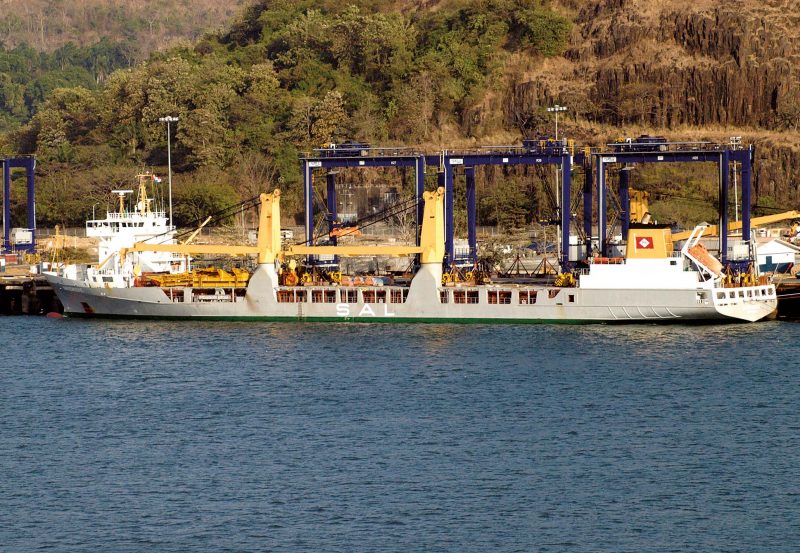
S.A.L. ONSHORE PLANNING
The secret to successful worldwide transport of extremely heavy craft and cargo lies in the pre-planning of the cargo and the voyage by experienced onshore personnel from the point of receiving the initial contact from a client. A team of 160 shore based personnel including naval architects, structural engineers, master mariners and stability experts produce CAD modelling and lift engineering plans for every project. Risk analysis and the design of the best lashing systems, and deck support systems, as well as the practical planning of bad weather avoidance and possible delays to voyages are essential for the safety of the ship and cargo.
The S.A.L. fleet at the start of 2017 was sixteen vessels, including two long term chartered vessels, manned by 600 highly trained seafarers, including specialised operators of heavy lift cranes and navigating officers and Masters. An affiliate crewing office at Manila is responsible for the recruitment of deck crews, and all are given health and safety training before beginning their seagoing careers. The fleet includes two Type 116 heavy lift ships purchased in June 2014 and renamed Calypso and Amoenitas, the former named after the first geared vessel in 1984 and the latter after the first sailing ship owned by the Heinrich family in 1865. They have a lift capacity of 900 tonnes when their twin cranes of 450 tonnes on the port side are used in tandem. They are classed to the highest Ice Class, equivalent to Finnish 1A Class, and were completed in February 2011 and October 2010 as Hyundai Pegasus and Hyundai Phoenix by the Taizou Kouan Shipbuilding yard, before being sold to Combi Lift (Harren and Partners) in September 2012 and renamed as Palmarola and Palanpur respectively. They have a service speed of sixteen knots from a six cylinder four stroke M.A.N.-B & W diesel of 9800 bhp, a length of 124.0 metres and moulded beam of 23.0 metres, and are measured at 11,473 grt with a deadweight of 9,963, and are equipped with two auxiliary hold hoists of 35 tonnes for the carriage of multi-purpose cargo and containers.
This pair of Type 116 heavy lift ships trade worldwide as do the other fourteen specialist heavy lift ships with lift capacities up to 2,000 tonnes and 3,500 square metres of unobstructed deck space, and using all types of spreader bars, lifting beams, slings, shackles, and lashing cables. Amoenitas sailed from Las Palmas de Gran Canaria on 26th November 2016 bound for Velsen Nord on the North Sea Canal at Rotterdam, and then sailed from Antwerp and Hamburg for Colombo and Kolkata (Calcutta), arriving in late January 2017. Calypso sailed from Hamina to St. Petersburg and Rotterdam in early 2017, and then sailed for Stord in Norway and arrived in Seville in February 2017.
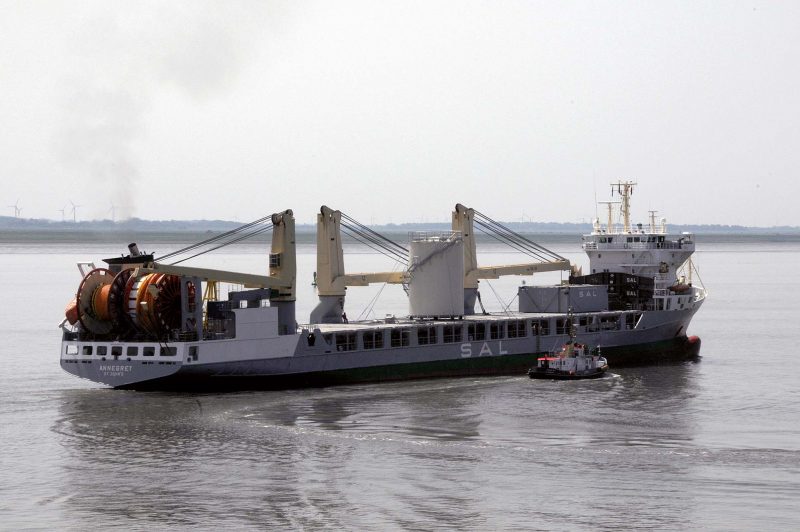
POSTSCRIPT
Almost all of the company heavy lift vessels have been built by the J. J. Sietas yard at Hamburg, and all of the heavy lift cranes are manufactured by the NMF Neuenfelder Maschinenfabrik facility located adjoining to the Sietas shipyard. Thus, this all Hamburg based shipbuilder and crane manufacturer has served the Heinrich family on the opposite bank of the Elbe at Altes Land and the present day S.A.L. for 150 years. It is appropriate that the sailing vessel Amoenitas of 1865 built by Sietas at Hamburg for the Heinrich family has been commemorated by a modern fleet heavy lift ship of the same name. Hans Heinrich died on Christmas Day 2013 aged 67 years, and his funeral took place at the Church of St. Martin and Nicolai in Steinkirchen on 2nd January 2014. He was the founder of S.A.L. and he had built the company up into a leading heavy lift, multi-purpose shipping and offshore group known worldwide.
The two flagships of the fleet, Lone and Svenja, are particularly impressive with their ability to lift and discharge project cargoes of two thousand tonnes in weight when their twin heavy lift cranes are used in tandem. Lone arrived at Kaohsiung on 15th February 2017 from Panama on the return voyage that had linked Hamburg to Sharjah in the United Arab Emirates with Mumbai, Shanghai and across the Pacific to Panama. Svenja was making consecutive voyages from the Tees and Aalborg to Belfast with wind turbine monopiles and transition pieces during the same month. The other members of the S.A.L. fleet arrived in the following ports in February 2017 – Frauke at Jizan (China), Regine at Shanghai, Trina at Singapore, Anne-Sofie at Salerno, Maria arrived at an American port via South Africa from Singapore, Annette at Dunkirk, Wiebke at Huangpu, Paula at Port Louis in Mauritius, Annegret at Jizan (China), Grietje at Kobe, and Annemieke at Mangalia in Roumania.
The S.A.L. Heavy Lift Head Office is in Hamburg, with the S.A.L. Offshore Office in Delft in Holland, and other offices are located worldwide at Houston (Texas), Helsinki, Singapore, Perth, Shanghai, Manila, Tokyo and London.

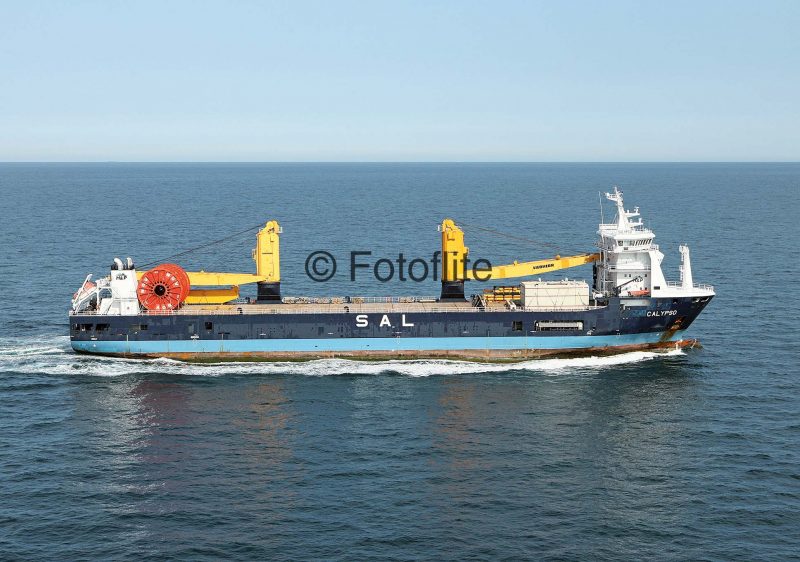

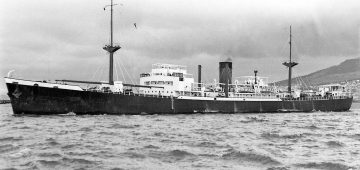
Comments
Sorry, comments are closed for this item